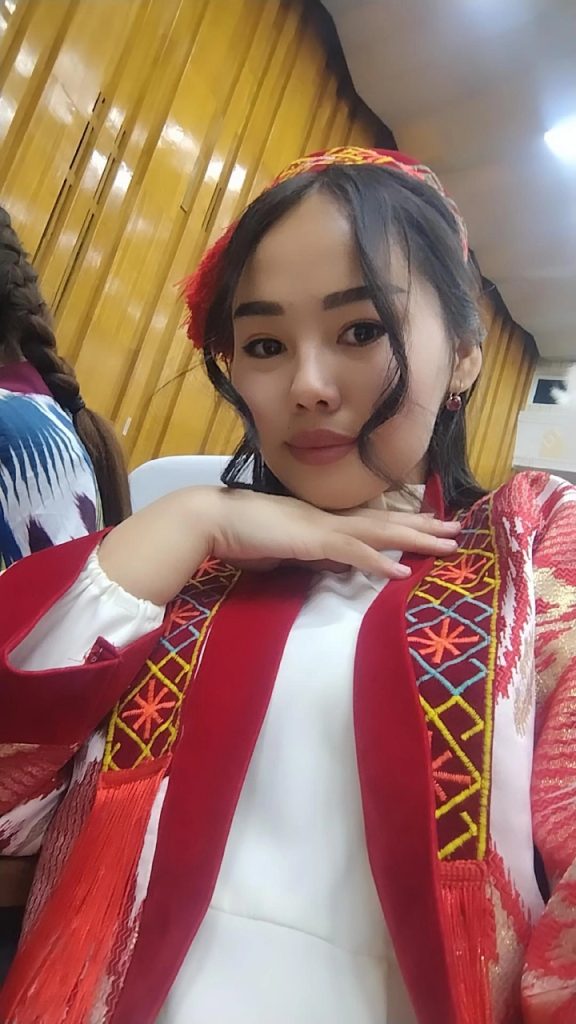PROGRESS IN INTERNATIONAL READING LITERACY STUDY (PIRLS) Annotation: This article reviews the achievements of the PIRLS international assessment program. The purpose, components of this program are mentioned. The procedure for conducting Reading Literacy, which is considered the main focus of the International Assessment Program, is noted Key words: education system, literacy, purpose, components, reading literacy, assessment, questionnaire The Progress in International Reading Literacy Study (PIRLS) is a large international comparative study of the reading literacy of fourth-grade students. The study is conducted by the International Association for the Evaluation of Educational Achievement (IEA), with national sponsors in each participating education system (previously referred to as education systems). The National Center for Education Statistics (NCES), in the Institute of Education Sciences at the U.S. Department of Education, is responsible for the implementation of PIRLS in the United States. Reading literacy is one of the most important abilities that students acquire as they progress through their early school years. It is the foundation for learning across all subjects, it can be used for recreation and for personal growth, and it equips young children with the ability to participate fully in their communities and the larger society. Participants in PIRLS include both countries and subnational entities, both of which are referred to as education systems. PIRLS focuses on the achievement and reading experiences of children in grades equivalent to fourth grade in the United States. The study includes a written test of reading comprehension and a series of questionnaires focusing on the factors associated with the development of reading literacy. PIRLS was administered in 2001 to students in 35 education systems, in 2006 to students in 45 education systems, in 2011 to students in 53 education systems, and in 2016 to students in 61 education systems. Purpose PIRLS is a carefully constructed reading assessment, consisting of a test of the reading literacy of fourth-grade students and questionnaires to collect information pertaining to fourth grade students’ reading literacy evaluation. PIRLS has four goals: (1) develop internationally valid instruments for measuring reading literacy suitable for establishing internationally comparable literacy levels in each of the participating education systems; (2) describe on one scale the literacy profiles of fourth-graders in school in each of the participating education systems; (3) describe the reading habits of fourth-graders in each participating education system; and (4) identify the home, school, and societal factors associated with the literacy levels and reading habits of fourth-graders in school. Components PIRLS assesses four broad-based comprehension processes within each of the two purposes for reading: focus on and retrieve explicitly stated information; make straightforward inferences, interpret and integrate ideas and information; and evaluate and critique content and textual elements. Also, PIRLS focuses on three aspects of reading literacy: purposes for reading; processes of comprehension; and student reading behaviors and attitudes. The first two aspects are measured through the PIRLS assessment component, which is administered to each participating student. The third dimension, reading behaviors and attitudes, is measured through a separate component of background questionnaires. In 2016, the PIRLS administration included the PIRLS assessment as well as ePIRLS, an assessment of online informational reading. PIRLS 2021 will present a new digital web-based delivery system called digitalPIRLS. digitalPIRLS will be offered so countries can take advantage of a full computer-based assessment. The digitalPIRLS assessments will include the ePIRLS assessment of online reading initiated in 2016. With digitalPIRLS, countries will experience greater operational efficiency in translation and translation verification, data entry, and scoring, without the need for printing or shipping. Digital PIRLS will be offered as a web-based system via school-based or IEA web servers, or a USB drive connected locally to a PC with the Windows Operating System. As an alternative to digitalPIRLS, countries may administer PIRLS 2021 in paper format. ePIRLS is available in 2021 only in conjunction with digitalPIRLS. For more information on digitalPIRLS, please visit the IEA website at https://www.iea.nl/. Source versions of all instruments (assessment booklets, the ePIRLS assessment, questionnaires, and manuals) were prepared in English and translated into the primary language or languages of instruction in each education system. In addition, it was sometimes necessary to adapt the instrument for cultural purposes, even in countries that use English as the primary language of instruction. All adaptations were reviewed and approved by the International Study Center to ensure they did not change the substance or intent of the question or answer choices. The first aspect of the assessment component that is targeted by PIRLS is purposes of reading. The purposes of reading component encompasses the two main reasons why young students read printed materials: for literary experience and for the acquisition and use of information. To measure the ability of students to read for literary experience, fictional texts are used; to measure students’ skills for acquiring and using information, nonfictional texts are used. In 2016, literary experience and acquiring and using information each made up 50 percent of this aspect of the PIRLS reading assessment. The second aspect of the PIRLS assessment component is processes of comprehension, which describes how young readers interpret and make sense of text. In 2016, this aspect was composed of four categories: focusing on and retrieving explicitly stated information (20 percent), making straightforward inferences (30 percent), interpreting and integrating ideas and information (30 percent) and evaluating and critiquing content and textual elements (20 percent). Both PIRLS and PIRLS Literacy devote half of the assessment passages to each of the purposes for reading, while the ePIRLS online assessment focuses solely on reading to acquire and use information. The ePIRLS approach simulates websites from the Internet, through which students can navigate to accomplish school-based research projects or tasks. Because PIRLS Literacy is designed for students earlier in the process of learning to read, a larger percentage of items (50 percent of the assessment) is devoted to measuring foundational reading comprehension processes—the ability to focus on and retrieve explicitly stated information. Also, PIRLS Literacy has shorter reading passages with easier vocabulary and syntax. The second component, background questionnaires, collects information on reading behaviors and attitudes (the third aspect of reading literacy targeted by PIRLS), and helps to provide a context for the performance scores. These questionnaires focus on such topics as students’ attitudes and beliefs about learning, their habits and homework, and their lives both in and outside of school; teachers’ attitudes and beliefs about teaching and learning, teaching assignments, class size and organization, instructional practices, and participation in professional development activities; and principals’ viewpoints on policy and budget responsibilities, curriculum and instruction issues, and student behavior, as well as descriptions of the organization of schools and courses. Assessment. In the main PIRLS assessment, each student completes a reading comprehension assessment booklet, which contains two blocks of passages that form the foundation of the PIRLS reading literacy test. Half of the assessment blocks contain passages of literary text which include realistic stories and traditional tales, and half contain passages of informational texts including chronological and non-chronological articles, a biographical article, and an informational leaflet. The passages of text are followed by questions about the text, which the student answers using constructed-response and multiple-choice response options. REFERENCES: 1. Kennedy, A.M., Mullis, I.V.S., Martin, M.O., and Trong, K.L. (2007). PIRLS 2006 Encyclopedia: A Guide to Reading Education in the Forty PIRLS 2006 Countries. Boston College, International Study Center. Chestnut Hill, MA. https://timssandpirls.bc.edu/pirls2006/encyclopedia.ht ml. 2.Mullis, I.V.S., Martin, M.O., Kennedy, A.M., and Flaherty, C.L. (2002). PIRLS 2001 Encyclopedia: A Reference Guide to Reading Education in the Countries Participating in IEA’s Progress in International Reading Literacy Study (PIRLS). Boston College, International Study Center. Chestnut Hill, MA. https://timss.bc.edu/pirls2001i/PIRLS2001_Pubs_ER. html. 3.Mullis, I.V.S., Martin, M.O., Kennedy, A.M., and Foy, P. (2007). PIRLS 2006 International Report: IEA’sProgress in International Reading Literacy Study in Primary Schools in 40 Countries. Boston College, International Study Center. Chestnut Hill, MA. https://timssandpirls.bc.edu/pirls2006/intl_rpt.html. 4.Mullis, I.V.S., Martin, M.O., Minnich, C.A., Drucker, K.T., & Ragan, M.A. (Eds.). (2012). PIRLS 2011 Encyclopedia: Education Policy and Curriculum in Reading, Volumes 1 and 2. Boston College, International Study Center. Chestnut Hill, MA. https://timssandpirls.bc.edu/pirls2011/encyclopedia-pirls.html. 5.Uses of Data Green, P.J., Herget, D., and Rosen, J. (2009). User’s Guidefor the Progress in International Reading Literacy Study (PIRLS): 2006 Data Files, and Database with United States Specific Variables (NCES 2009-050).
Aziza Amonova is a 3rd grade student of the Faculty of Primary Education of Jizzakh State Pedagogical University. Currently, she has about 40 scientific articles and two methodological manuals. In addition, she participated in about 25 different forums and conferences.




